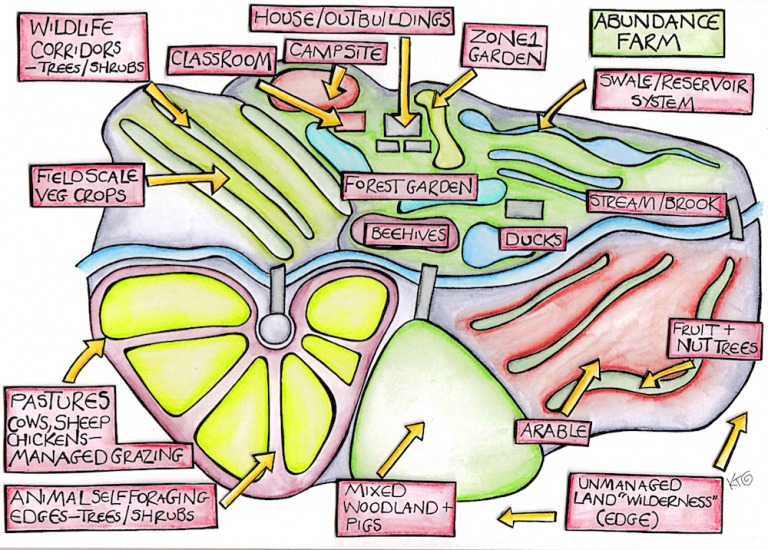
Permaculture Plant Propagation for Beginners
What is Plant Propagation?
Plant propagation is the process of multiplying plants by creating new plants out of existing ones. This can be done by taking cuttings from mature plants, dividing rootstocks, layering, grafting, budding, tissue culture, micropropagation, seed germination, etc.
There are many different methods to propagate plants depending on what type of plant you want to grow. For example, some plants require a large amount of space while others don’t take up much room. Some plants are easier to propagate than others.
Propagating plants is a great way to save money because you won’t have to buy expensive plants every year. You’ll also be able to grow plants that might otherwise be difficult to obtain.
Plant propagation falls into two categories: sexual and asexual reproduction.
Plant Propagation: Sexual Reproduction
Sexual reproduction is about seeds, pollen/flowers, swapping of genetic material and inviting in slight variations and newness. Some plants are wildly “untrue to seed” because parent material was a crafted hybrid.
Some plants are very tidily true to seed, in form and taste very much like their parents. Those are the ones that are easier to save seed from. In general, plants from seeds, and plants which create seeds, are more ecologically resilient because they’re quicker to adapt.
Pros: quickly adapts to your site, easy to store & share, culturally important to be part of the genetic diversity maintenance & process.
Cons: can cross into duds, observation needed when flowering (so no interference), new plants will need more time.
Plant Propagation: Asexual Reproduction
Asexual reproduction might not sound as exciting as flower sex, but hey, it really helps grow a lot of exact plants fast. If you have a whole food forest understory to populate, than having pots of mint, yarrow, strawberries, oregano, thyme, bee balm, chives, etc., all propagated through asexual means is what can do the job fast (and fragrantly and deliciously!)
These techniques are all variations on cutting a plant apart to start new ones. You can divide, literally with a serrated kitchen knife, replant runners (like strawberries), or encourage other plants to have stems make roots (through “layering”).
You can cut parts of the plant to make “cuttings” or “clones” that root on their own, or with some plants “live stake” cuttings straight into the ground. Many plants take better to one technique than another, and if you’re unsure, ask Google “what’s the easiest way to propagate ____?”.
Pros: faster, exact flavor and type, bigger plants.
Cons: Sterile pots/potting soil infrastructure needed, not as resilient ecologically and, over the long term, can become sterile, making sexual reproduction impossible and severely limiting the genetic potential of the plant.
Plant Propagation: Grafting
Grafting, which combines sexual and asexual reproduction (you grow root stock from seed, then graft clone stock onto it) is a method of combining two plants in order to get the plant we want.
This is usually done with fruit trees because growing fruit trees from seed won’t result in the same variety. A twig or scion from the parent fruit tree is grafted onto a rootstock. The rootstock needs to come from a tree in the same family.
There is often a choice of rootstocks; different ones result in larger or smaller trees. The scion and rootstock are carefully cut so that the cambium (green growing layer) of both fits together. A graft is successful when the scion and rootstock have fused and become one plant.
Pros: great fruit, great structure, can plan for diversity of sizes (from dwarf to standard).
Cons: weaker plants, may not live as long, more expensive.
We touched on grafting in this article, in case you missed it.
How is Plant Propagation Used in Permaculture?
Propagating plants is one of the key elements of sustainable agriculture. You can grow many different crops from just a few seeds, and it allows you to produce large amounts of food without having to buy thousands of dollars worth of fertilizer each season.
In addition, propagating plants is much cheaper than buying plants from nurseries.
In permaculture, there are several ways to propagate plants. Some of the methods include layering, dividing, rooting, grafting, budding, budding off, and cutting. Each method has its advantages and disadvantages, depending on what type of crop you wish to grow.
Getting plants for free, with Gela and Michelle.
Use this “cheat sheet” to help you build your collection
Want to learn more about how to propagate plants and other topics related to permaculture, sustainability, and whole-systems design? We offer a range of FREE (donations optional) online courses!



